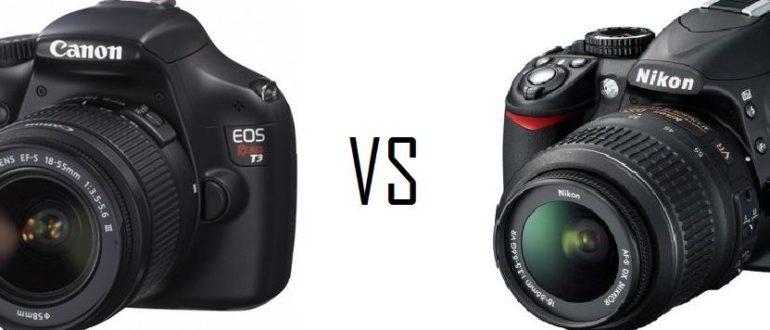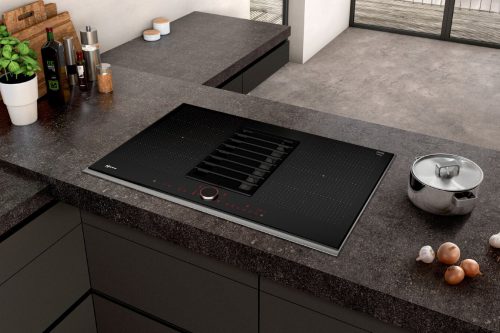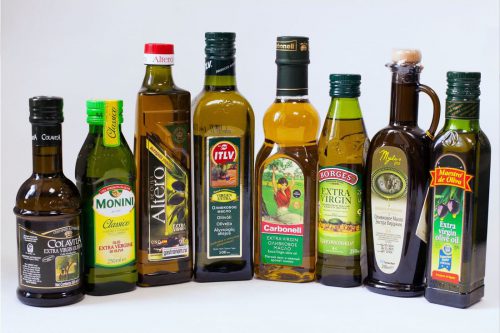The camera market is developing every year, offering customers more and more interesting devices equipped with many functions. However, even an experienced user can get confused in such a variety, not to mention beginners. It is good if among your friends there is a professional photographer who will help you choose a good SLR camera. Otherwise, you run the risk of spending money on a completely inappropriate model for you. For this reason, we decided to compile a rating of the best DSLR cameras for our readers, including the 10 most interesting devices from the three leading world brands.
Content
Best DSLR cameras - rating
Read also:
Nikon D5300 Kit
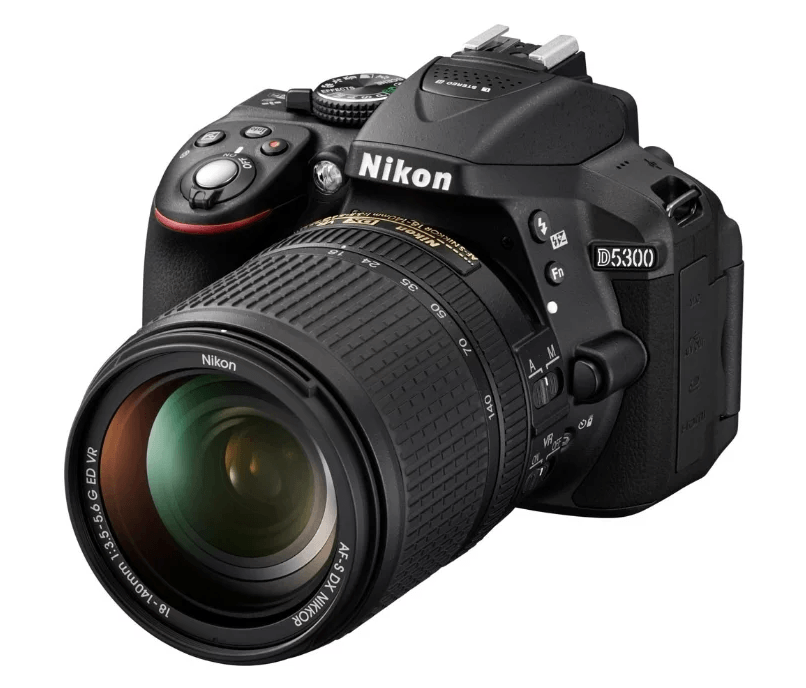 Opening our TOP, entry-level DSLR camera from the Japanese brand Nikon. The D5300 was released in October 2013 as a replacement for the D5200 camera. The inexpensive Nikon DSLR differed from its predecessor in the presence of Wi-Fi and GPS modules, a matrix without low-pass filtering, advanced video recording capabilities, and a redesigned interface. The D5300 uses an APS-C sensor with 24.2 effective megapixels, cleaning function and ISO 100-3200. However, the camera also boasts a number of extended ISO values up to 25600, but in this case you have to put up with noticeable noise in the image. The whale lens that comes with the popular camera model has good parameters for novice photographers. The built-in flash of the camera is effective at a distance of up to 12 meters. Another advantage of this camera is the flip-down screen, which makes it easier to shoot from awkward positions. But there is no image stabilization in this budget SLR camera, which is a significant disadvantage. Another disadvantage is not always accurate autofocus operation. Plus, it's only possible with AF-S lenses. Advantages:
Opening our TOP, entry-level DSLR camera from the Japanese brand Nikon. The D5300 was released in October 2013 as a replacement for the D5200 camera. The inexpensive Nikon DSLR differed from its predecessor in the presence of Wi-Fi and GPS modules, a matrix without low-pass filtering, advanced video recording capabilities, and a redesigned interface. The D5300 uses an APS-C sensor with 24.2 effective megapixels, cleaning function and ISO 100-3200. However, the camera also boasts a number of extended ISO values up to 25600, but in this case you have to put up with noticeable noise in the image. The whale lens that comes with the popular camera model has good parameters for novice photographers. The built-in flash of the camera is effective at a distance of up to 12 meters. Another advantage of this camera is the flip-down screen, which makes it easier to shoot from awkward positions. But there is no image stabilization in this budget SLR camera, which is a significant disadvantage. Another disadvantage is not always accurate autofocus operation. Plus, it's only possible with AF-S lenses. Advantages:
- good autonomy
- many digital filters
- built-in Wi-Fi
- convenient swivel screen
- high quality photo shooting
- no noise up to ISO 3200
- fast autofocus (for budget class)
Disadvantages:
- mediocre GPS module
- no image stabilization
- autofocus does not always work correctly
Canon EOS 200D Kit
 In second place is the most compact SLR in the ranking. The dimensions of this model without the lens are only 122x93x70, and the weight together with the batteries is 456 g. The EOS 200D is one of the best cheap Canon DSLR cameras released on the market in the summer of 2017. The average cost of this model with a good kit lens is only 35 thousand rubles, which makes it an excellent option for beginners. However, this inexpensive DSLR also boasts excellent features such as a sensitive 24.2 megapixel (ISO 100-3200) sensor with cleaning function and expanded values up to ISO25600, built-in NFC, Bluetooth and Wi-Fi modules, and a high-quality rotary display. The Canon EOS 200D camera has a phase detection autofocus with 49 focus points, and can also record Full HD video at 60 fps (up to 4 GB or 29 minutes). Advantages:
In second place is the most compact SLR in the ranking. The dimensions of this model without the lens are only 122x93x70, and the weight together with the batteries is 456 g. The EOS 200D is one of the best cheap Canon DSLR cameras released on the market in the summer of 2017. The average cost of this model with a good kit lens is only 35 thousand rubles, which makes it an excellent option for beginners. However, this inexpensive DSLR also boasts excellent features such as a sensitive 24.2 megapixel (ISO 100-3200) sensor with cleaning function and expanded values up to ISO25600, built-in NFC, Bluetooth and Wi-Fi modules, and a high-quality rotary display. The Canon EOS 200D camera has a phase detection autofocus with 49 focus points, and can also record Full HD video at 60 fps (up to 4 GB or 29 minutes). Advantages:
- good set of interfaces
- small size
- the lightest "DSLR" TOP
- picture quality
- touch screen
- fast autofocus
- matrix sensitivity
- excellent build
- convenient rotary display
Disadvantages:
- at the stated price are absent
Sony Alpha SLT-A58 Kit
 The Sony Alpha SLT line offers users state-of-the-art handheld SLR cameras with a fixed translucent mirror. This design is advantageous in that it allows you to enlarge the viewfinder, ensure that 100% of the frame is displayed in it, as well as reduce the dimensions and weight of the camera. In addition, the camera implements the possibility of continuous autofocusing not only when taking a photo, but also when recording a video and in Live View mode, which competing products cannot boast of. However, such a camera is best suited for a novice photographer and an amateur, because the technology used in the Alpha SLT-A58 also has its drawbacks: a stationary mirror is very difficult to clean, and its contamination directly affects the quality of images. As for the rest, we have the best solution among cheap DSLRs. It uses an APS-C matrix with 20.1 million effective pixels, ISO 100-3200 sensitivity and a good built-in flash with a range of up to 10 m. The camera has a tilting 2.7-inch display and an electronic viewfinder with a 100% field of view. Advantages:
The Sony Alpha SLT line offers users state-of-the-art handheld SLR cameras with a fixed translucent mirror. This design is advantageous in that it allows you to enlarge the viewfinder, ensure that 100% of the frame is displayed in it, as well as reduce the dimensions and weight of the camera. In addition, the camera implements the possibility of continuous autofocusing not only when taking a photo, but also when recording a video and in Live View mode, which competing products cannot boast of. However, such a camera is best suited for a novice photographer and an amateur, because the technology used in the Alpha SLT-A58 also has its drawbacks: a stationary mirror is very difficult to clean, and its contamination directly affects the quality of images. As for the rest, we have the best solution among cheap DSLRs. It uses an APS-C matrix with 20.1 million effective pixels, ISO 100-3200 sensitivity and a good built-in flash with a range of up to 10 m. The camera has a tilting 2.7-inch display and an electronic viewfinder with a 100% field of view. Advantages:
- more variety of shooting modes
- convenient swivel screen
- high-quality pictures
- good autonomy
- high-speed shooting
- optical stabilization
- capacious battery
Disadvantages:
- perceptible photo noise at high ISO
- no support for 60 fps when shooting Full HD
- whale lens capabilities
Canon EOS 6D Body
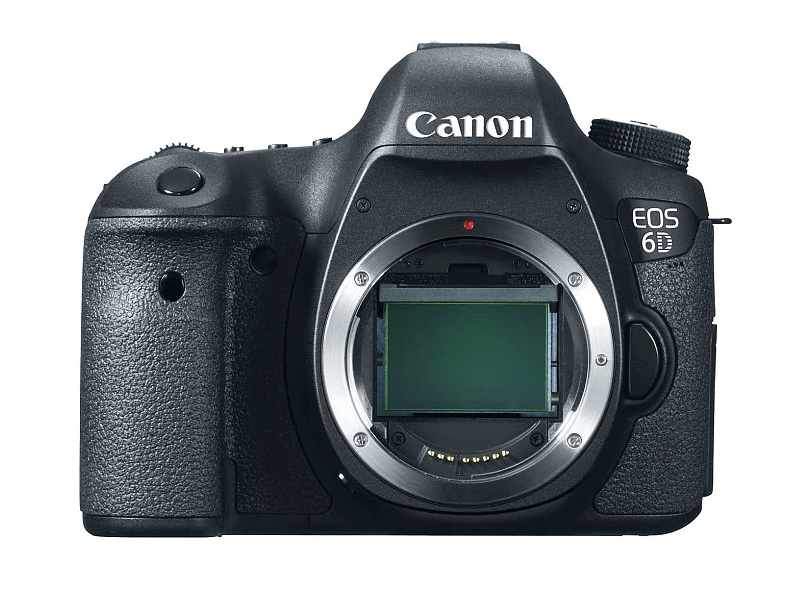 The EOS 6D is one of the best hobbyist DSLRs. This model uses a full-frame sensor with a resolution of 20.2 MP, cleaning function and sensitivity of 50-3200 ISO. The camera also boasts an excellent set of interfaces, which contains not only video and audio connectors, but even an infrared port. In addition, an inexpensive and good camera for amateur photography pleases with excellent autonomy and high image quality even in low light conditions. The only nuance that an ordinary photographer will not like is the poor performance of autofocus. Pros who are willing to manually adjust the focus of the camera can get the most out of the Canon EOS 6D. Advantages:
The EOS 6D is one of the best hobbyist DSLRs. This model uses a full-frame sensor with a resolution of 20.2 MP, cleaning function and sensitivity of 50-3200 ISO. The camera also boasts an excellent set of interfaces, which contains not only video and audio connectors, but even an infrared port. In addition, an inexpensive and good camera for amateur photography pleases with excellent autonomy and high image quality even in low light conditions. The only nuance that an ordinary photographer will not like is the poor performance of autofocus. Pros who are willing to manually adjust the focus of the camera can get the most out of the Canon EOS 6D. Advantages:
- built-in GPS module
- high-quality assembly
- excellent light sensitivity
- infrared port
- Wi-Fi availability
- battery life
- convenient control
- ergonomic design provides a comfortable grip
- selectable direct focus point
Disadvantages:
- slow burst
- autofocus operation
- no built-in flash
- Full HD video only at 30 fps
Sony Alpha ILCA-77M2 Body
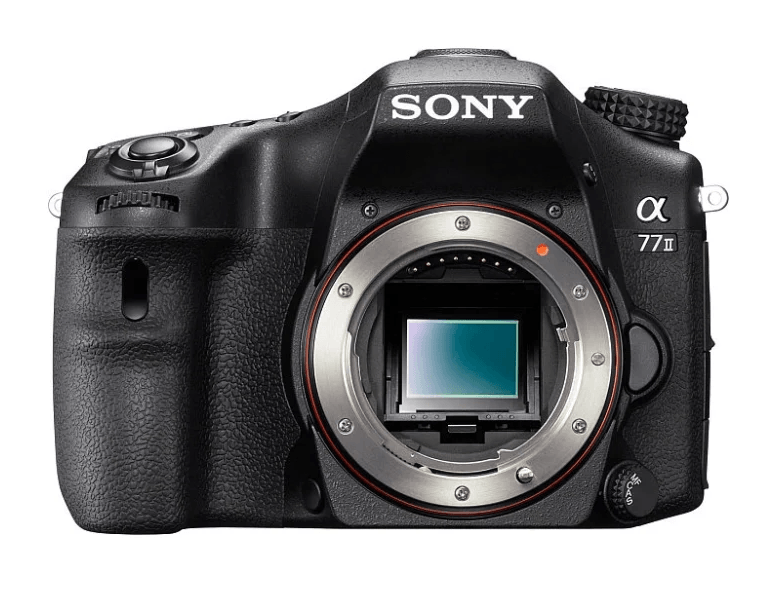 The ILCA designation in Sony lightweight cameras is essentially similar to the SLT index. This is how the Japanese manufacturer began to call DSLRs with a fixed mirror after the unification of the lineup. In our review, the Sony Alpha ILCA-77M2 camera belongs to the mid-price category, but it is also quite suitable for professional photographers. However, before choosing this model, you need to take into account the features of devices with a fixed mirror, which were mentioned above. The ILCA-77M2 uses an APS-C sensor with 24.3 million active pixels and ISO 50-3200. This Sony camera in the rating of SLR cameras is one of the fastest in terms of continuous shooting (12 frames / s). The disadvantages of the reviewed model include poor autofocus, as well as a small battery capacity. Advantages:
The ILCA designation in Sony lightweight cameras is essentially similar to the SLT index. This is how the Japanese manufacturer began to call DSLRs with a fixed mirror after the unification of the lineup. In our review, the Sony Alpha ILCA-77M2 camera belongs to the mid-price category, but it is also quite suitable for professional photographers. However, before choosing this model, you need to take into account the features of devices with a fixed mirror, which were mentioned above. The ILCA-77M2 uses an APS-C sensor with 24.3 million active pixels and ISO 50-3200. This Sony camera in the rating of SLR cameras is one of the fastest in terms of continuous shooting (12 frames / s). The disadvantages of the reviewed model include poor autofocus, as well as a small battery capacity. Advantages:
- Full HD video recording at 60 fps
- built-in stereo microphone
- fast burst shooting
- high quality built-in flash
- high matrix sensitivity
- smart processor
- NFC and WiFi support
- the ability to control using a smartphone
- good photo quality at high ISO
Disadvantages:
- battery life
- the quality of the autofocus
- not the most convenient control
- long turn on
Nikon D750 Body
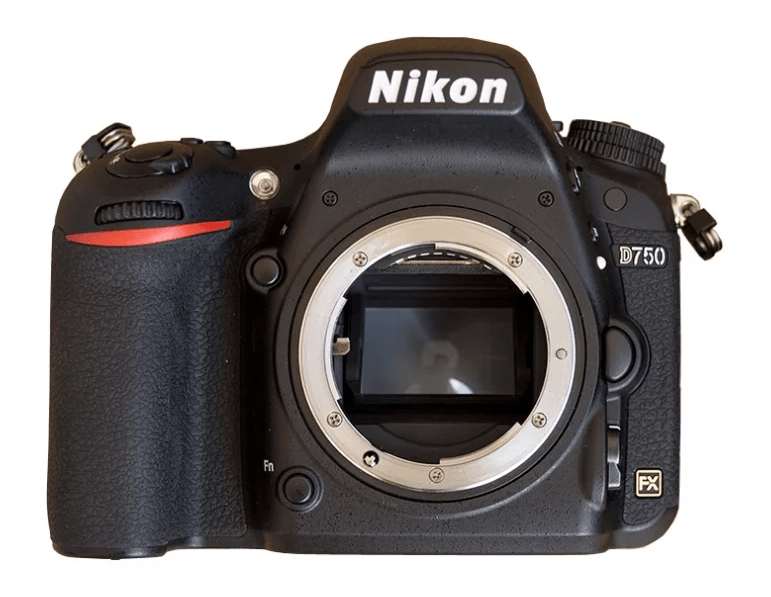 The D750 is Nikon's top-of-the-line full-frame high-speed camera.The device has a main display with a diagonal of 3.2 inches and a secondary information screen. The sensor of a good SLR camera has a sensitivity of 50-3200 ISO and supports advanced modes up to ISO51200 inclusive. Also in Nikon D750 there is phase autofocus with 51 focusing points (15 cross), Wi-Fi module and a mirror viewfinder with a 100% field of view. A significant drawback of this model is the use of USB 2.0, which makes copying information over the wire very slow, as well as fast battery consumption when Wi-Fi is on. In addition, Nikon D750 is noticeably inferior to competitors in terms of buffer size. From customer reviews, the lack of a shutter speed of 1/8000 s can be attributed to the disadvantages of the camera. For a camera with a price tag of 120 thousand rubles, this is an important drawback. Advantages:
The D750 is Nikon's top-of-the-line full-frame high-speed camera.The device has a main display with a diagonal of 3.2 inches and a secondary information screen. The sensor of a good SLR camera has a sensitivity of 50-3200 ISO and supports advanced modes up to ISO51200 inclusive. Also in Nikon D750 there is phase autofocus with 51 focusing points (15 cross), Wi-Fi module and a mirror viewfinder with a 100% field of view. A significant drawback of this model is the use of USB 2.0, which makes copying information over the wire very slow, as well as fast battery consumption when Wi-Fi is on. In addition, Nikon D750 is noticeably inferior to competitors in terms of buffer size. From customer reviews, the lack of a shutter speed of 1/8000 s can be attributed to the disadvantages of the camera. For a camera with a price tag of 120 thousand rubles, this is an important drawback. Advantages:
- built-in Wi-Fi module
- convenience and build quality
- excellent autofocus
- sensitive Full Frame matrix
- intuitive interface
- wide functionality
- no noise at high ISO
- high quality video recording (Full HD, 60 fps)
- smart control and rotary display
Disadvantages:
- small buffer
- large weight and dimensions
- fast discharge when Wi-Fi is on
Nikon D810 Body
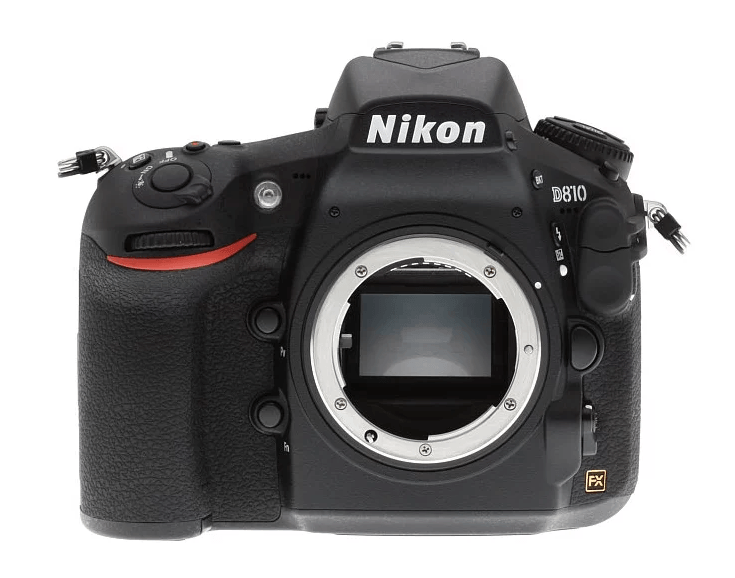 The next line of the rating is occupied by another professional DSLR from the Nikon brand. The D810 is a high-resolution camera with 36.3 million active pixels and a sensor cleaning function. The sensitivity of the latter in the reviewed model is in the range of 64-3200 ISO. However, extended values of ISO6400 / 12800/25600/51200 are also available to the user. An excellent full-frame DSLR camera is equipped with a USB 3.0 port, HDMI connector, as well as inputs for connecting a microphone and remote control. In addition, the camera boasts a stereo microphone, moisture protection and support for the TIFF format. The reviewed model of the camera is equipped with a flash, usual for its class, with a range of 12 m, and also has a main 3.2-inch matrix and an additional monochrome display for displaying information. Advantages:
The next line of the rating is occupied by another professional DSLR from the Nikon brand. The D810 is a high-resolution camera with 36.3 million active pixels and a sensor cleaning function. The sensitivity of the latter in the reviewed model is in the range of 64-3200 ISO. However, extended values of ISO6400 / 12800/25600/51200 are also available to the user. An excellent full-frame DSLR camera is equipped with a USB 3.0 port, HDMI connector, as well as inputs for connecting a microphone and remote control. In addition, the camera boasts a stereo microphone, moisture protection and support for the TIFF format. The reviewed model of the camera is equipped with a flash, usual for its class, with a range of 12 m, and also has a main 3.2-inch matrix and an additional monochrome display for displaying information. Advantages:
- fast USB 3.0
- matrix sensitivity and resolution
- support for TIFF image format
- stereo microphone and headphone jack
- waterproof case
- two slots for memory cards
- long battery life
- great photo detail
- autofocus operation
Disadvantages:
- large dimensions and weight
- buffer size when shooting in RAW and S-RAW format
- lack of wireless modules
Canon EOS 5DSR Body
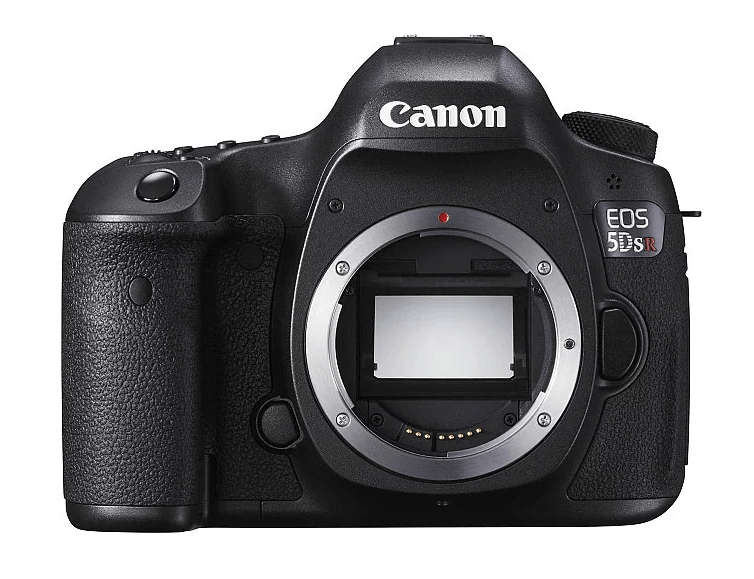 The EOS 5DSR is Canon's finest DSLR in the professional segment today. This model has a 53MP full-frame sensor with ISO 50-3200. The Canon EOS 5DSR is equipped with a USB 3.0 port, microphone input, HDMI connector, and a remote control jack. Burst shooting speed here is not the fastest, but in the JPEG format the camera can take 510 photos at once in one series. In general, in terms of price-quality ratio, the Canon EOS 5DSR camera is at a decent level, so minor flaws can be forgiven. Advantages:
The EOS 5DSR is Canon's finest DSLR in the professional segment today. This model has a 53MP full-frame sensor with ISO 50-3200. The Canon EOS 5DSR is equipped with a USB 3.0 port, microphone input, HDMI connector, and a remote control jack. Burst shooting speed here is not the fastest, but in the JPEG format the camera can take 510 photos at once in one series. In general, in terms of price-quality ratio, the Canon EOS 5DSR camera is at a decent level, so minor flaws can be forgiven. Advantages:
- a high resolution
- photosensitivity
- interface kit
- horizon level in viewfinder
- bright and rich display
- stable operation of the autofocus system
- possibility of fine tuning
- great build
Disadvantages:
- no built-in flash
- high noise level
- short battery life
Nikon D500 Body
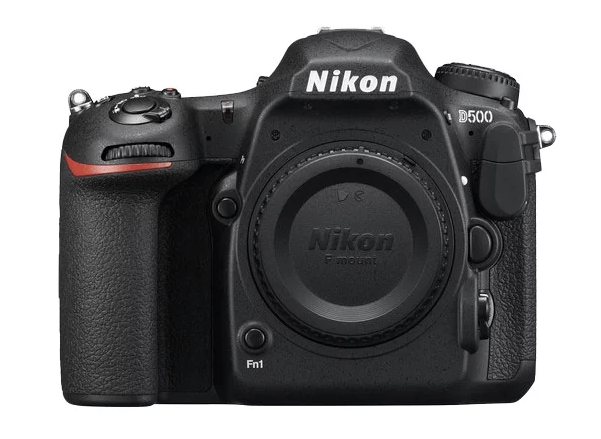 Another top-notch high-speed camera from Nikon in our ranking is the D500. It's an impressive 20.9MP APS-C camera with ISO 50-3200. And if similar parameters are offered to the user by more expensive models, then the extended ISO values in them reach no more than 25600 or 51200, when in the Nikon D500 this figure is ISO1640000. In all other respects, the Japanese manufacturer's DSLR camera does not disappoint either. There is phase detection autofocus with 153 focusing points, 99 of which are cross-type.The D500 also boasts a shutter speed of 1/8000 s, Wi-Fi, Bluetooth and NFC modules, a USB 3.0 standard and the ability to record videos in 4K format. The shooting speed of a photo with a good amateur SLR is 10 frames / s. As for the disadvantages of this model of the camera, then, taking into account the cost, they are all insignificant. Advantages:
Another top-notch high-speed camera from Nikon in our ranking is the D500. It's an impressive 20.9MP APS-C camera with ISO 50-3200. And if similar parameters are offered to the user by more expensive models, then the extended ISO values in them reach no more than 25600 or 51200, when in the Nikon D500 this figure is ISO1640000. In all other respects, the Japanese manufacturer's DSLR camera does not disappoint either. There is phase detection autofocus with 153 focusing points, 99 of which are cross-type.The D500 also boasts a shutter speed of 1/8000 s, Wi-Fi, Bluetooth and NFC modules, a USB 3.0 standard and the ability to record videos in 4K format. The shooting speed of a photo with a good amateur SLR is 10 frames / s. As for the disadvantages of this model of the camera, then, taking into account the cost, they are all insignificant. Advantages:
- large buffer
- fast USB 3.0 port
- good dynamic range
- perfect white balance
- high-quality video shooting
- support for recording clips in Ultra HD
- built-in Bluetooth, Wi-Fi and NFC
- high speed and precision focusing
Disadvantages:
- no critical remarks found
Canon EOS 5D Mark III Body
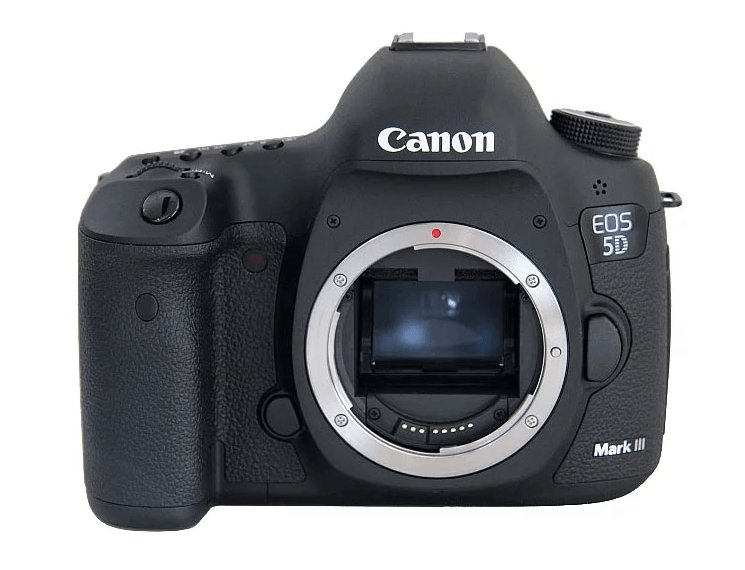 Our rating is closed by a professional SLR camera from Canon. The EOS 5D Mark III has everything the power user needs. This full-frame model features a 22.3MP sensor with ISO 50-3200 and extended modes up to and including ISO102400. Also, the best model of the camera for amateurs and professionals can boast of phase detection autofocus with 61 focus points (41 cross points), protection from moisture and dust, continuous shooting of up to 65 photos in JPEG and 18 in RAW, as well as good autonomy. According to user reviews, the only drawbacks of the camera are the impossibility of shooting Full HD video at 60 fps and the large weight (950 g without batteries). There is also a USB 2.0 standard, not 3.0, but the 2012 model can be forgiven for such a defect. Advantages:
Our rating is closed by a professional SLR camera from Canon. The EOS 5D Mark III has everything the power user needs. This full-frame model features a 22.3MP sensor with ISO 50-3200 and extended modes up to and including ISO102400. Also, the best model of the camera for amateurs and professionals can boast of phase detection autofocus with 61 focus points (41 cross points), protection from moisture and dust, continuous shooting of up to 65 photos in JPEG and 18 in RAW, as well as good autonomy. According to user reviews, the only drawbacks of the camera are the impossibility of shooting Full HD video at 60 fps and the large weight (950 g without batteries). There is also a USB 2.0 standard, not 3.0, but the 2012 model can be forgiven for such a defect. Advantages:
- photo quality at high ISO
- high light sensitivity
- fast and accurate autofocus
- battery life
- wide range of manual settings
- electronic level function
- quick work
- protection from dust and moisture
- the ability to customize picture styles
- strength due to the presence of metal in the body
- battery life
- clever design provides a comfortable grip
Disadvantages:
- large weight compared to analogues
- does not record Full HD at 60fps
- lack of autofocus illumination
- high price
Which DSLR is better to buy
If you want to choose a good DSLR camera that can fully meet your needs and justify its cost, then initially you should decide on your level. Beginners should not spend money on expensive devices, because when the skills are brought to the level required for such cameras, they will still have to be changed to a more advanced version. Inexpensive Nikon or Sony models are your choice. But people whose work is related to photography are not recommended to save money. For professional purposes, buy premium Canon cameras. However, no matter what class of cameras you are interested in, in our TOP-10 only the best models of "DSLRs" from the most famous manufacturers are selected.

